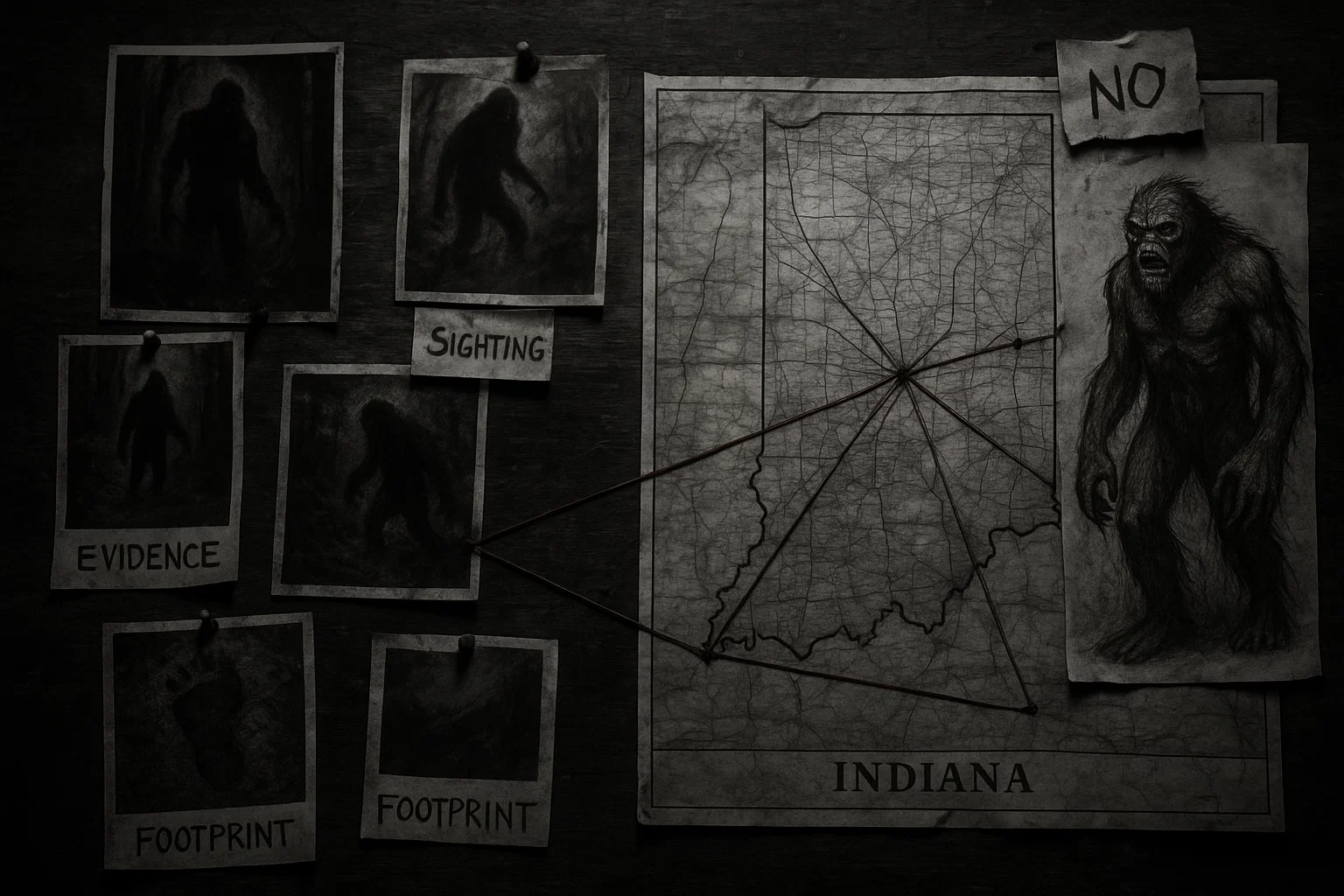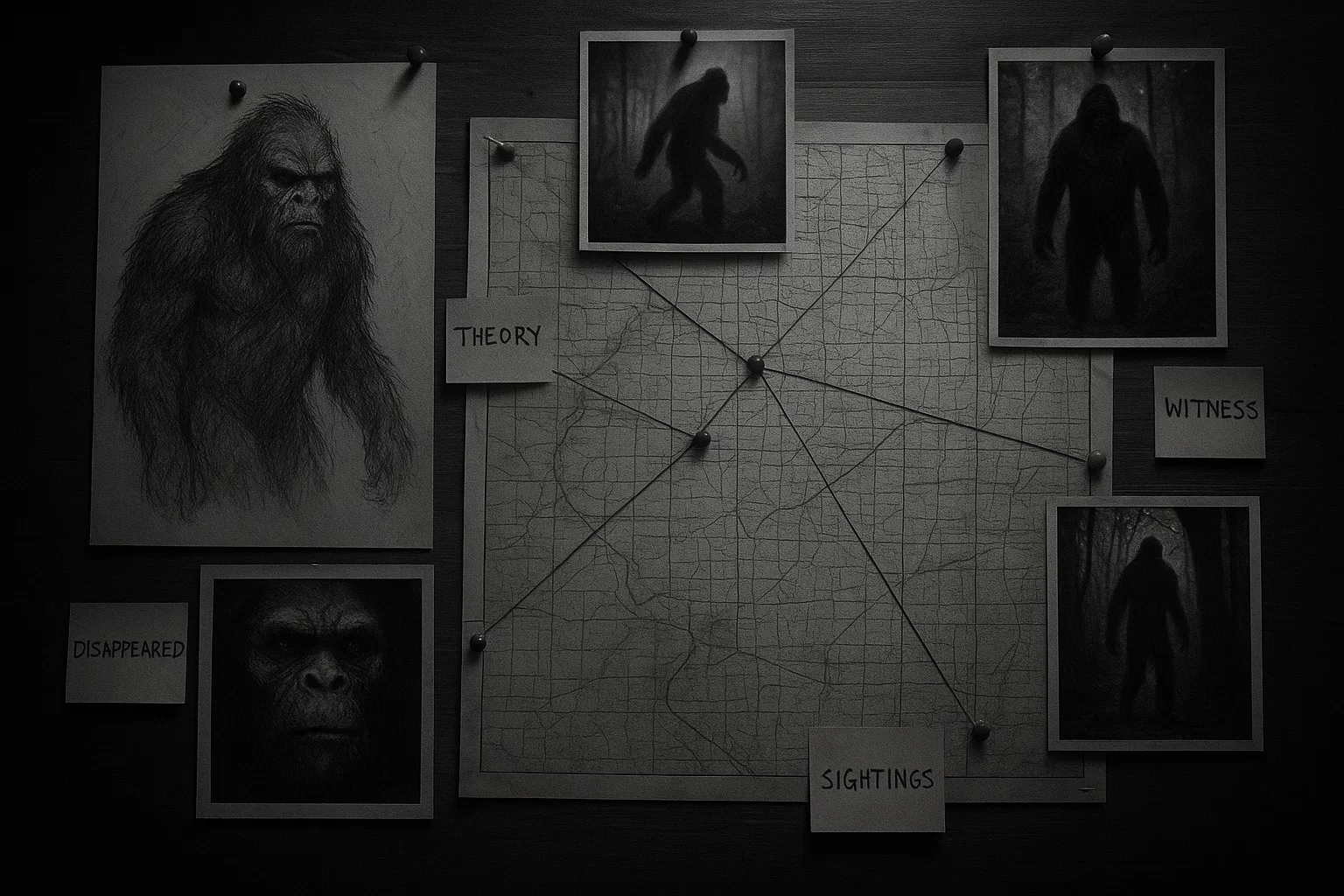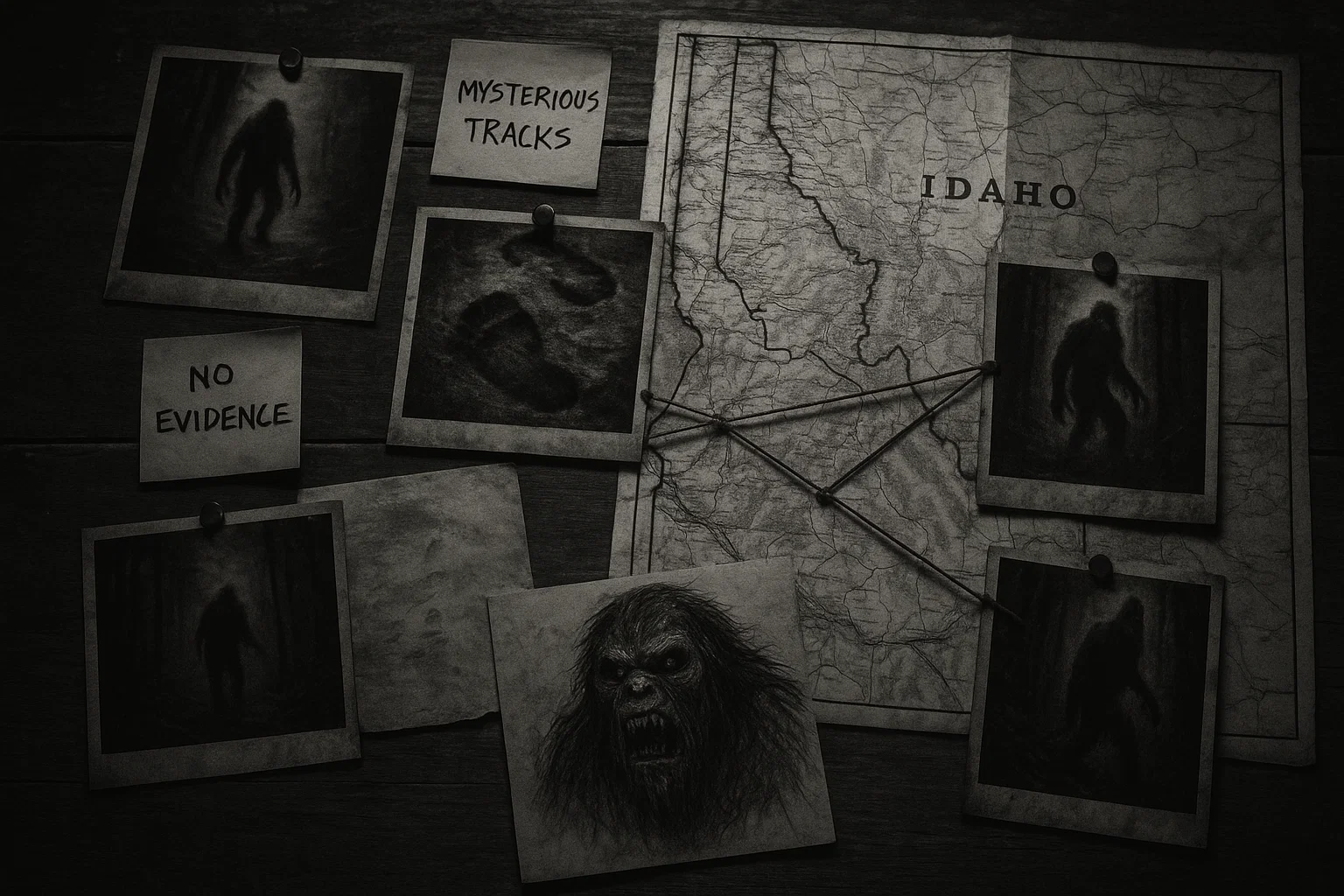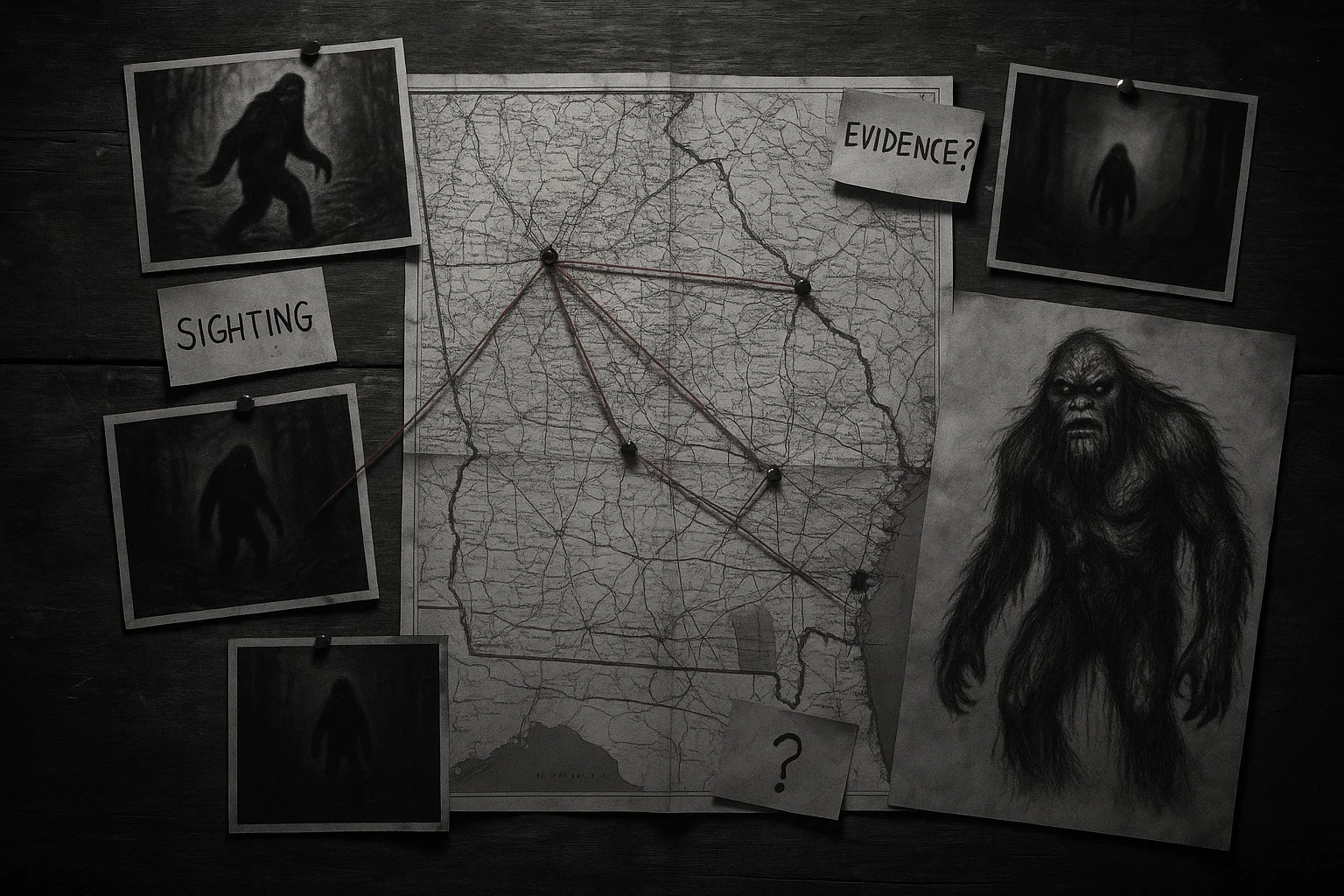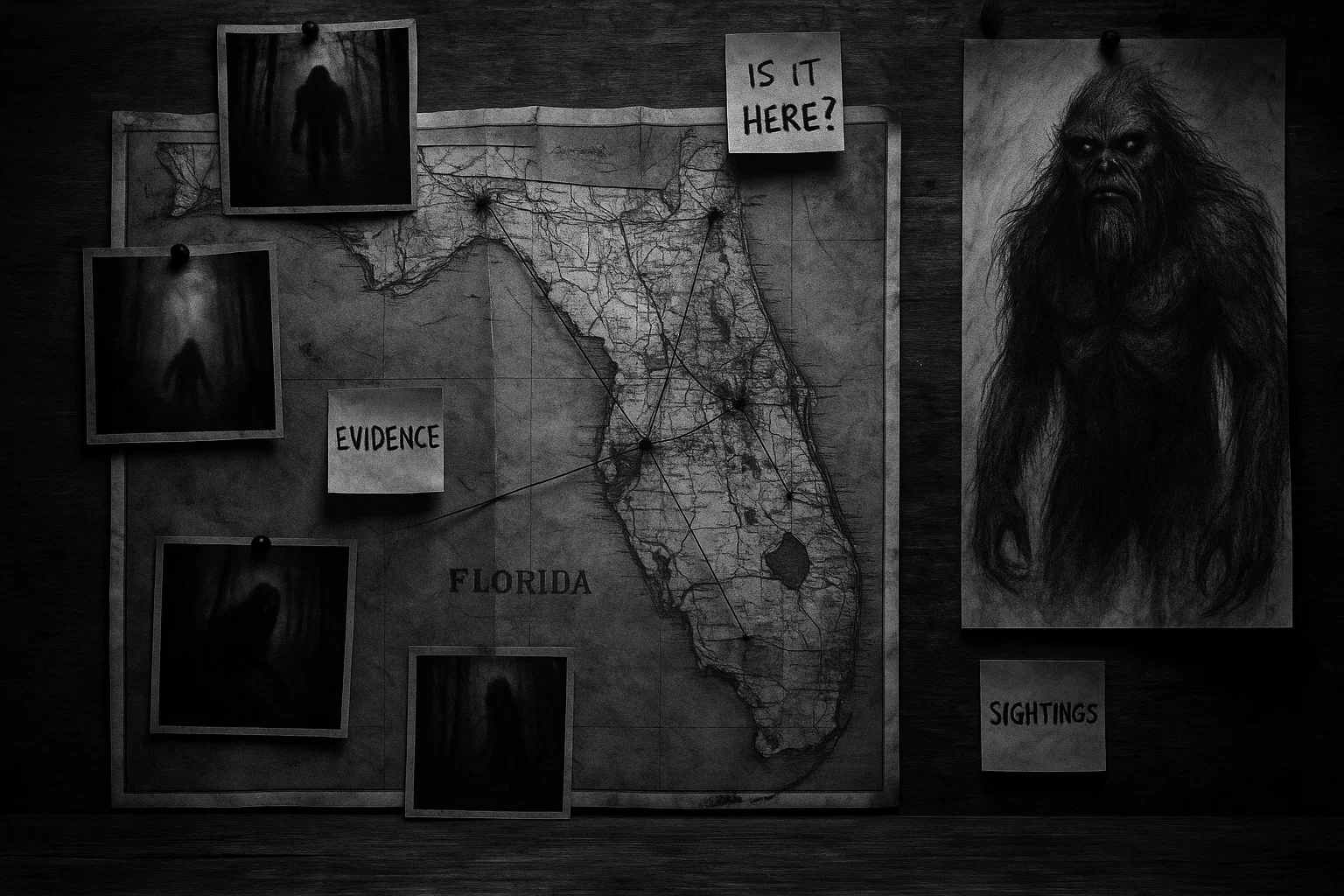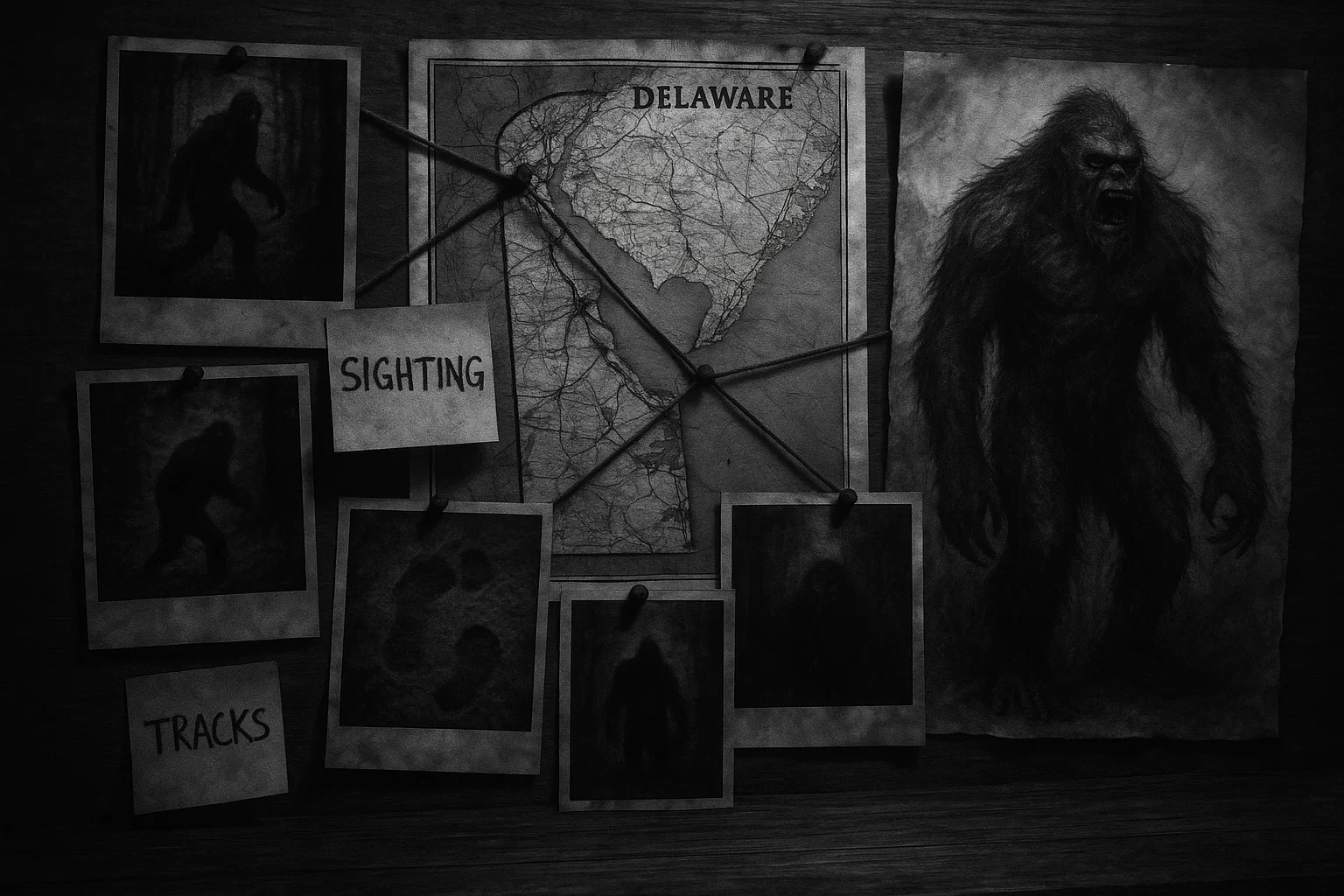Nestled in the heart of southern Ontario, Canada, Lake Simcoe harbors a mystery that has captivated locals and cryptozoology enthusiasts for over two centuries: Igopogo, a legendary creature said to lurk in its depths.
Often described as a serpentine beast with a canine-like head, Igopogo has sparked countless tales, from early settler accounts to modern-day sightings.
Is this elusive creature a real, undiscovered species, or merely a product of folklore and misidentification?
Table of Contents
What Is Igopogo?
Igopogo is a mythical creature rumored to inhabit Lake Simcoe, a significant freshwater lake in Ontario, Canada. Its name is a playful nod to the more famous Ogopogo of Lake Okanagan, British Columbia, and the 1952 comic book I Go Pogo, a slogan popularized by Walt Kelly’s comic strip.
Locally, it’s also known as Kempenfelt Kelly, after Kempenfelt Bay in Barrie, Ontario, and Beaverton Bessie, after Beaverton, Ontario. Some refer to it as Simcoe Sam or simply the Loch Simcoe Monster, reflecting its regional significance.
The legend of Igopogo dates back to the early 19th century, with reports from early settlers and indigenous communities adding to its mystique.
The creature has become a cultural icon in the region, celebrated through local folklore and even a Sea Serpent sculpture erected at Barrie’s waterfront in 2016, symbolizing its enduring presence in community identity.
You May Also Like: Belial, Lord of Lies: The Demon Who Fought Angels and Fooled Empires
Igopogo’s story is intertwined with the history of Lake Simcoe, a lake once called Ouentironk (“Beautiful Water”) by the Huron natives and later renamed by John Graves Simcoe, the first Lieutenant-Governor of Upper Canada, in honor of his father.
While believers argue that Igopogo could be an undiscovered aquatic species, skeptics suggest that sightings are likely misidentifications of known animals, such as seals or otters, that occasionally enter the lake.
Despite the lack of definitive proof, Igopogo remains a cornerstone of Canadian folklore, fueling curiosity and debate among cryptozoologists and locals alike.
What Does Igopogo Look Like?
The physical appearance of Igopogo is a subject of fascination, with eyewitness accounts providing a range of descriptions that highlight its unique characteristics.
Most commonly, Igopogo is described as having a long, stovepipe-like neck topped with a head resembling that of a dog or horse. Its body is typically reported as gray and seal-like, adorned with multiple dorsal fins and a fish-like tail.
Size estimates vary significantly, ranging from 12 to 70 feet, though most accounts suggest a length of 30 to 40 feet. The creature’s skin is often described as dark or charcoal-colored, with some witnesses noting prominent eyes and a gaping mouth that add to its fearsome appearance.
One outlier description comes from E.J. Delaney, who claimed Igopogo possessed two long antennae, four octopus-like arms, three pairs of legs, and six gill-like appendages with feathers. This account, however, is widely regarded as an exaggeration or misinterpretation, as it deviates significantly from more consistent reports.
The creature’s reported ability to bask in the sun for extended periods suggests it may be an air-breathing animal, leading to speculation that it could be a large pinniped, such as a seal or otter, or even a giant otter. Its mammalian-like features, particularly the canine-like head, distinguish it from other lake monsters, which are often described as reptilian or serpentine.
The appearance of Igopogo seems somewhat suited to Lake Simcoe’s environment, with its seal-like body potentially adapted for navigating the lake’s deep waters and shallow bays.
The canine-like head, however, appears out of place in an aquatic setting, prompting speculation about its evolutionary origins or possible misidentification. The creature’s dark coloration could aid in camouflage within the lake’s murky depths, while its reported dorsal fins and fish-like tail suggest agility in water.
These characteristics, combined with its ability to surface and bask, align with the behavior of air-breathing aquatic mammals, making the pinniped theory a plausible explanation, though not definitive.
Habitat
Lake Simcoe, located approximately 40 miles north of Toronto, is the primary habitat of the elusive Igopogo. Covering about 744 square kilometers, it is the fourth-largest lake wholly within Ontario, after Lake Nipigon, Lac Seul, and Lake Nipissing.
The lake measures roughly 30 kilometers long and 25 kilometers wide, with a maximum depth of 42 meters and an average depth of around 15 meters.
Known for its clean waters and rich biodiversity, Lake Simcoe supports a variety of fish species, including lake trout, whitefish, and smallmouth bass, making it a popular destination for fishing, boating, and recreation. The lake freezes over in winter, a rare phenomenon for large freshwater lakes, which may influence the behavior of any resident creatures.
Geologically, Lake Simcoe is a remnant of the prehistoric Lake Algonquin and is part of the Great Lakes system, connected to Lake Huron via the Severn River and to Lake Ontario through the Trent-Severn Waterway.
You May Also Like: The Truth About the Alabama Metal Man: 1973 Cryptid or Hoax?
This connectivity allows for the potential migration of aquatic species, such as seals, which have been documented in the lake, supporting theories of misidentification. Kempenfelt Bay, a deep western arm of the lake extending into Barrie, Ontario, is particularly associated with Igopogo sightings, earning the creature its nickname Kempenfelt Kelly.
The lake’s largest island, Georgina Island, and several smaller islands serve as cottage destinations, adding to the human activity around the lake.
Historically, Lake Simcoe was a significant site for indigenous peoples, including the Huron (Wendat) and Anishinaabe, who called it Zhooniyaang-zaaga’igan (“Silver Lake”) in Anishinaabemowin.
The lake was part of a fur-trade portage route during the French regime, visited by Samuel de Champlain in 1615. While no specific indigenous legends directly reference Igopogo, the lake’s cultural significance and history of unexplained phenomena contribute to its mystique.
Nearby Lake Couchiching, connected to Lake Simcoe via The Narrows at Orillia, has its own reports of strange aquatic creatures, suggesting a broader regional tradition of lake monster lore.
The lake’s proximity to urban centers like Toronto and Barrie, combined with its natural beauty and recreational appeal, creates a unique environment where human observation and cryptozoological intrigue intersect.
Igopogo Sightings
The history of Igopogo sightings spans over two centuries, with reports dating back to the early 19th century. These accounts, ranging from early settler observations to modern video evidence, provide a glimpse into the creature’s alleged behavior and appearance.
| Date | Place | Witness(es) | Description |
|---|---|---|---|
| 1823 | Lake Simcoe | David Soules | Saw a long creature leaving a wake in the water and a trail in the mud. |
| 1903 | Lake Simcoe | Unknown | Reported sighting (no details). |
| 1906 | Lake Simcoe | Unknown | Reported sighting (no details). |
| 1952 | Lake Simcoe, near Georgina Island | Four witnesses, incl. Wellington Charles | No specific description provided. |
| July 22, 1963 | Lake Simcoe, near Kempenfelt Bay | Rev. Bill Williams and family | Saw a charcoal-colored, serpentine creature with multiple dorsal fins, 30-70 ft long. |
| August 1979 | Lake Simcoe | A woman | Reported a big hump in the water. |
| June 13, 1983 | Lake Simcoe, near Lefroy | William W. Skrypetz | Sonar reading of a large animal with a long neck (disputed). |
| 1991 | Lake Simcoe | Don Hepworth (reported) | Video recording of a large, seal-like animal during a hydroplane race. |
| 2016 | Lake Simcoe | John Kirk | Claimed to have a tape showing something jumping out of the water (not shown). |
1823 Sighting by David Soules
Date: 1823
Location: Lake Simcoe, near the shore
Witness: David Soules, an early settler
Description: In 1823, David Soules, while washing sheep with his brother along the shores of Lake Simcoe, observed a large, long creature moving through the water.
The creature left a significant wake and a trail in the mud along the shore, suggesting it may have come close to land. This sighting, credited as the first recorded encounter with Igopogo, set the stage for the creature’s enduring legend.
The lack of detailed physical descriptions limits its evidential value, but the account’s historical context underscores the early roots of the Igopogo mythos.
You May Also Like: Anne Boleyn’s Ghost: England’s Tragic Queen Who Haunts Forever
1952 Sighting by Wellington Charles and Others
Date: 1952
Location: Lake Simcoe, near Georgina Island
Witnesses: Four witnesses, including Wellington Charles, chief of the Georgina Island First Nation
Description: In 1952, four witnesses, including Wellington Charles, reported seeing an unidentified creature in Lake Simcoe near Georgina Island. While specific details about the creature’s appearance are scarce, the sighting is notable for its association with a respected community leader.
The lack of a detailed description makes this account less conclusive, but its inclusion in local records reinforces the persistence of the Igopogo legend among indigenous and settler communities.
1963 Sighting by Reverend Bill Williams
Date: July 22, 1963
Location: Lake Simcoe, near Kempenfelt Bay
Witnesses: Reverend Bill Williams and his family
Description: On July 22, 1963, Reverend Bill Williams and his family were boating on Lake Simcoe when they encountered a charcoal-colored, serpentine creature with multiple dorsal fins. They estimated its length to be between 30 and 70 feet, describing it as undulating through the water with a smooth, eel-like motion.
The creature’s dark, almost black skin and prominent fins distinguished it from typical lake fauna, making this one of the most detailed sightings in Igopogo’s history.
The credibility of the witnesses, including a clergyman, adds weight to this account, though the lack of photographic evidence leaves it open to interpretation.
1979 Sighting by an Unnamed Woman
Date: August 1979
Location: Lake Simcoe
Witness: An unnamed woman
Description: In August 1979, a woman reported seeing a large hump in the water while near Lake Simcoe. The sighting was brief, and no detailed description of the creature’s features was provided.
The observation of a hump aligns with some descriptions of Igopogo’s serpentine form, but the lack of specificity and corroborating evidence limits its impact. This sighting reflects the sporadic nature of Igopogo reports, often characterized by fleeting glimpses of unusual shapes in the water.
1983 Sonar Reading by William W. Skrypetz
Date: June 13, 1983
Location: Lake Simcoe, near Lefroy’s Government Dock and Marina
Witness: William W. Skrypetz, a sonar operator
Description: On June 13, 1983, William W. Skrypetz, a sonar operator at Lefroy’s Government Dock and Marina, detected an unusual object in Lake Simcoe using sonar equipment.
The reading revealed a creature with a massive body and a long, tapering neck, resembling the archetypal lake monsters like Champ or the Loch Ness Monster.
Skrypetz estimated the creature to be significantly larger than typical lake fauna. However, skeptics later suggested the sonar hit could have been a school of fish or an equipment anomaly, casting doubt on its validity. Despite the controversy, this sighting remains a key piece of evidence due to its use of technology.
You May Also Like: Green Lady of Caerlaverock: The Haunting of Galloway’s Castle
1991 Video Footage
Date: 1991
Location: Lake Simcoe, during a hydroplane race
Witness: Don Hepworth (reported)
Description: In 1991, during a hydroplane race on Lake Simcoe, a video captured what appeared to be a large, seal-like animal moving through the water. The footage, reported by Don Hepworth, showed a creature approximately 9 to 12 feet long with mammalian or pinniped features.
The creature surfaced briefly, appearing to observe a racer before submerging. This video, analyzed by cryptozoologist John Kirk of the British Columbia Scientific Cryptozoology Club (BCSCC), is considered one of the most compelling pieces of evidence for Igopogo’s existence.
Its clarity and context during a public event lend it significant credibility, though skeptics argue it could depict a known aquatic mammal.
Evidence and Investigations
The evidence for Igopogo is limited but intriguing, consisting primarily of eyewitness accounts, a photograph, a sonar reading, and a video. In 1976, an observer captured a photograph purportedly showing Igopogo, but the image’s authenticity and context remain unclear due to limited documentation.
The photograph depicts a dark shape in the water, but its lack of clarity makes it difficult to analyze definitively. In 1983, William W. Skrypetz, a sonar operator at Lefroy’s Government Dock and Marina, recorded a sonar hit indicating a large object with a long, tapering neck and a massive body.
This reading was initially hailed as evidence of a large, unknown creature, but skeptics later suggested it could have been a school of fish or an equipment malfunction, diminishing its evidential value.
The most compelling evidence emerged in 1991 during a hydroplane race on Lake Simcoe, when a video captured a large, seal-like animal approximately 9 to 12 feet long.
The footage, reported by Don Hepworth, showed the creature surfacing briefly and appearing to observe a racer before diving back into the water. Analyzed by cryptozoologist John Kirk of the British Columbia Scientific Cryptozoology Club (BCSCC), the video prompted Kirk to reconsider his earlier belief that Igopogo had either migrated or died.
He noted its mammalian or pinniped features, suggesting it could be a real, unknown species. However, skeptics argue the video likely depicts a known aquatic mammal, such as a seal, given Lake Simcoe’s connection to Lake Huron.
Investigations into Igopogo have been limited, with no large-scale scientific expeditions dedicated to the creature. In the 1980s, John Kirk conducted research on Lake Simcoe, initially concluding that the creature was no longer present due to a decline in sightings.
The 1991 video, however, renewed interest, though no further studies have produced conclusive results. The absence of physical evidence, such as bones, carcasses, or DNA, remains a significant barrier to proving Igopogo’s existence.
Scientific skepticism prevails, with experts emphasizing the lack of verifiable evidence and the likelihood of misidentification.
Possible Explanations
Pinniped Misidentification
Skeptics argue that Igopogo sightings are likely misidentifications of known aquatic mammals, such as seals or otters, which can enter Lake Simcoe via its connection to Lake Huron through the Severn River.
The 1991 video, showing a seal-like animal, supports this theory, as does the creature’s reported ability to bask in the sun, a behavior typical of pinnipeds. The canine-like head described in some accounts could result from misinterpreting the facial features of a seal or otter, especially at a distance or in poor lighting.
This explanation fits well with the lake’s ecology, as seals are known to occasionally venture into inland waters. However, the reported size of Igopogo, often exceeding 30 feet, far surpasses that of typical pinnipeds, which rarely exceed 10 feet, casting doubt on this theory for larger sightings.
You May Also Like: The House That Feeds | Horror Story
Prehistoric Survivor
Some believers propose that Igopogo could be a surviving plesiosaur or other prehistoric creature, akin to theories about the Loch Ness Monster or Ogopogo.
The long neck and serpentine body described in sightings like the 1963 account align with the plesiosaur hypothesis, which posits that a marine reptile from the Mesozoic era could have survived in isolated lake environments.
However, Lake Simcoe’s relatively young geological age, formed about 10,000 years ago as a remnant of Lake Algonquin, and the absence of fossil evidence or physical remains make this theory unlikely.
Additionally, the lake’s cold winters and periodic freezing would pose significant challenges for a large, air-breathing reptile, further weakening this hypothesis.
Relation to Other Cryptids
Another theory suggests that Igopogo may be related to other aquatic cryptids, such as the Cadborosaurus of the Pacific Northwest or the Irish Dobhar-chu.
The canine-like head and seal-like body draw parallels with the Dobhar-chu, a mythical creature described as a large, dog-like aquatic predator. Similarly, the Cadborosaurus is reported to have a horse-like head and a serpentine body, resembling some Igopogo descriptions.
However, the geographical distance between Lake Simcoe and these regions makes a direct biological connection improbable. The similarities may instead reflect shared cultural motifs in cryptozoology, where lake monsters are often described with similar features across different regions.
Hoax or Folklore
The possibility that Igopogo is a product of folklore or hoaxes cannot be dismissed. The unusual description by E.J. Delaney, with features like antennae and octopus-like arms, suggests potential exaggeration or fabrication, possibly inspired by local storytelling traditions.
The lack of consistent physical evidence, such as bones or clear photographs, supports the idea that some sightings may be embellished tales or misinterpretations of natural phenomena, such as logs, waves, or large fish.
The cultural significance of Igopogo, reinforced by events like the Barrie waterfront sculpture unveiling, may perpetuate the legend, encouraging anecdotal reports without verifiable proof.
Most Likely Theory
Among these explanations, the pinniped misidentification theory appears most plausible. The 1991 video’s depiction of a seal-like creature, combined with Lake Simcoe’s connection to Lake Huron and documented presence of seals, aligns with known ecological patterns.
The creature’s reported behaviors, such as basking and surfacing, are consistent with pinnipeds, and the lake’s environment supports their occasional presence.
However, the reported size of Igopogo in some accounts, particularly the 1963 sighting’s estimate of up to 70 feet, exceeds the dimensions of any known pinniped, suggesting that some sightings may involve exaggeration or misperception.
While not definitive, this theory best balances the available evidence with scientific plausibility.
You May Also Like: Caipora Sightings Across Brazil: Myth, Cryptid, or Forest Ghost?
Comparison With Other Similar Cryptids
Igopogo shares similarities with other lake monsters reported across North America and beyond, particularly those inhabiting freshwater lakes or coastal waters:
| Cryptid | Location | Description | Size Range | Similarity to Igopogo |
|---|---|---|---|---|
| Ogopogo | Lake Okanagan, BC, Canada | Serpentine, dark skin, large body | Up to 15m | Serpentine, large size |
| Manipogo | Lake Manitoba, MB, Canada | Serpentine | Unknown | Serpentine |
| Memphre | Lake Memphremagog, QC/VT, USA/Canada | Long neck, humps, dark green/black | Unknown | Long neck, large size |
| Champ | Lake Champlain, NY/VT/QC, USA/Canada | Reptilian, slimy gray, long neck, flippers | 20-40 ft | Long neck, flippers |
| Bessie | Lake Erie, OH, USA/Canada | Snake-like, grayish, 1 ft diameter | 30-40 ft | Snake-like, large size |
| Chessie | Chesapeake Bay, MD/VA, USA | Dark-colored, snakelike, flippers | Unknown | Snakelike, flippers |
| Cressie | Crescent Lake, NL, Canada | Eel-like | Up to 20 ft | Eel-like, smaller size |
| Illie | Lake Iliamna, AK, USA | Whale or seal-like | Up to 30 ft | Seal-like, similar size |
| Altamaha-ha | Altamaha River, GA, USA | Snake-like head, flippers | 30 ft | Snake-like, flippers |
| Amhuluk | Memaloose Lake, OR, USA | Serpentine with horns | Unknown | Serpentine, unique feature (horns) |
| Bozho | Lake Mendota, WI, USA | Serpentine, log-like | Unknown | Serpentine |
| Nessie | Loch Ness, Scotland | Long neck, humps, plesiosaur-like | 20-100 ft | Long neck, large size |
| Selma | Seljordsvatnet, Norway | Serpentine | Up to 15m | Serpentine, large size |
| Bunyip | Australia (various water bodies) | Varies, often dog-like face | Varies | Dog-like face, varies |
Igopogo’s mammalian-like features, particularly its canine-like head, distinguish it from the more reptilian or serpentine descriptions of cryptids like Ogopogo, Nessie, or Selma.
Its reported seal-like body and smaller size estimates align closely with Illie and Chessie, which also inhabit environments where pinnipeds are plausible. The shared long-neck feature with Champ, Memphre, and Nessie suggests a common archetype in lake monster lore, though Igopogo’s unique head shape sets it apart.
The Bunyip’s occasional dog-like face offers a cultural parallel, but its varied descriptions and broader habitat range make direct comparisons challenging.
Is Igopogo Real?
The question of whether Igopogo exists remains unresolved, with evidence neither conclusively proving nor disproving its presence. The 1991 video, showing a seal-like creature, and the 1983 sonar reading provide the strongest support for Igopogo’s existence, yet both are contested by skeptics who favor explanations like pinniped misidentification.
The consistency of certain features, such as the long neck and canine-like head, across sightings like the 1963 account suggests a phenomenon worth investigating, but the absence of physical remains, such as bones or DNA, undermines claims of a novel species.
Cryptozoologists like John Kirk advocate for further exploration, citing the 1991 footage as compelling, while scientists emphasize the need for verifiable evidence, noting that cryptozoology often relies on anecdotal reports rather than rigorous methodology.
The pinniped misidentification theory appears most likely, given Lake Simcoe’s ecological connectivity and the presence of seals, but it does not fully account for the larger size estimates reported.
The legend of Igopogo, reinforced by cultural artifacts like Barrie’s Sea Serpent sculpture, continues to captivate, serving as a testament to humanity’s fascination with the unknown.
Until definitive evidence emerges, Igopogo remains a tantalizing mystery, embodying the allure of unexplained phenomena in Canada’s natural landscapes.


